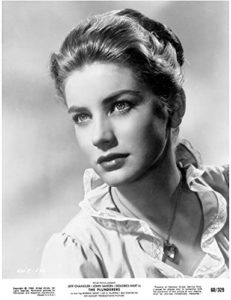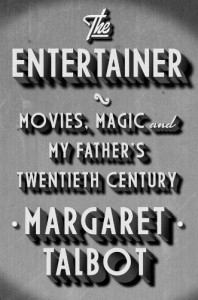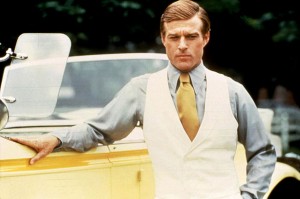Interview: Steve Taravella, Author of a New Book about Mary Wickes
Posted on June 9, 2013 at 8:00 am
I love the great character actress Mary Wickes, who was the nun who was replaced by Whoopi Goldberg as choir director in “Sister Act,” the nurse who was “a treasure” opposite Bette Davis in “Now Voyager,” and the hotel staff who operated the switchboard in “White Christmas.” And it was a very great pleasure to read the new biography about Wickes by Steve Taravella called Mary Wickes: I Know I’ve Seen That Face Before, the meticulously researched and beautifully written story of her life on and off camera. As an actress, she had impeccable comic timing. She appeared on Broadway, on radio, and on television as well as in the movies, appearing with some of Hollywood’s brightest stars. Off-screen, she was for decades the closest friend of Lucille Ball. Taravella generously took time to answer my questions about the book.
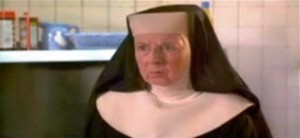
How did you decide to write about Mary Wickes?
As a former journalist who likes researching people’s lives, I always thought I’d enjoy preparing a proper biography some day, though certainly I never had Mary in mind. When I found myself moving from San Francisco to Washington DC without a job lined up, I decided this was my opportunity to try. Since I’d often considered writing a magazine profile of Mary, I turned to her life first, to determine if it might be interesting enough to justify a book treatment. I mean, would readers find her life genuinely intriguing or was my interest in her unusual? I quickly decided there was indeed a book in Mary’s story. It wasn’t generally known that she had been the original Mary Poppins, the animator’s model for Cruella de Vil, and a member of Orson Welles’ groundbreaking Mercury Theatre. There were interesting stories in each of these things – and many more, like her close friendship with Lucille Ball.
I began in spring of 1998, giving myself a year to research and write full-time. I was naïve to think I could finish this in a year. Twelve months became thirteen and, not wanting to incur debt to complete this, I returned to the workforce. My new job required frequent travel to the developing world – mostly Ethiopia, Kenya and South Africa, but also Uganda, India and other places – so the book lost some momentum. I’d pull it out on vacation to work on a chapter here or there, but was far from done. When I took a job with the UN in Italy four years ago, I decided that if I didn’t finish the book now, I’d never complete it, and I didn’t want all that effort to have been wasted. So my time in Rome became extraordinarily single-focused – not the typical ex-pat experience.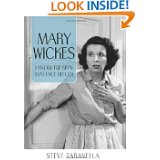
Your breadth and depth of research is remarkable. What or who was toughest to track down?
Hardest to track down were former child stars, who often leave the business, form social circles outside the entertainment industry and, especially with women, build lives under different names. I had great trouble finding Anne Whitfield, who played a teenager in White Christmas and would have been the only surviving member of the film’s principle cast. Finally, after several hundred pages in a Google search, I found her name in a PDF of promotional materials for an “old radio days” festival in the Pacific Northwest in the 1980s. I tracked down the organizer of the event, who agreed to pass my contact information to her husband. When we finally spoke, Whitfield was very helpful. She long ago stopped performing, became a grandmother, and worked in environmental programs in Washington State under her new last name, Phillips.
One of the biggest stars quoted in the book keeps her personal address and phone number private. My requests to her public PO box went unanswered. Since I knew the city she lived in, I searched public records available online in hopes that her name would be recorded with her residential address somewhere. I discovered a recent permit approval for a home construction project under a name that jumped out at me – that of the actress’ long-deceased mother. Female stars of a certain generation sometimes used their mother’s name to preserve their privacy (just as Mary used her grandmother’s name (Mary Shannon) whenever she was hospitalized, and I recognized this name from the actress’ own memoir years before. I sent a letter by International DHL to this address, and received the reply I needed.
In the end, I interviewed almost 300 people. In some ways, I had an easier time than expected because people sort of figure, If he’s going to all this trouble about Mary Wickes, it’s got to be for a legitimate effort, and they agree to cooperate. If I’d been preparing, say, yet another biography of Elizabeth Taylor, I don’t think doors would have opened so easily.
What surprised you the most in what you found out?
That for her entire life, Mary knowingly kept a man in Ohio from learning that they were first cousins. Discovering this episode of her life was stunning. Even though Mary had very little family herself — she was an only child, as was her father, and her mother had only one sibling – she always professed great devotion to family ties and family history. Mary knew everything about this man, one of her only two cousins – yet he knew nothing of Mary Wickes until I reached out to him for this book after her death, showing him personal family papers of hers that were clearly about him. This was a powerful family secret for her, and a painful one for him, even in his 80s. For instance, his whole life, he was unable to learn where his mother was buried; meanwhile, Mary visited her gravesite often.
She appeared in one of her signature roles, the nurse in “The Man Who Came to Dinner,” on stage, film, TV and radio — which did she prefer and why? Why was that role one of her favorites?
No doubt, she preferred the stage version. The Broadway run was her big break, gave her steady, high-profile work for almost two years, brought her to the attention of casting directors and pushed her into social circles she wouldn’t otherwise have been part of. It cemented her as a performer who could deliver – and it reassured her that she could in fact make it as an actress. She got one of the show’s longest, loudest laughs every night. On the other hand, a TV version 30 years later was a disappointment for all involved, even with Orson Welles as star and the Hallmark Hall of Fame people behind it.
What was the change made from the theatrical to film version for “taste” reasons?
We forget today the power that Hayes Office censors once had over film releases. In this case, the play’s central character – arrogant, abrasive and over-bearing – refers to Mary’s character, a nurse, as “Miss Bedpan.” That was changed to “Miss Stomach Pump,” which censors felt would offend filmgoers less.
Mary Wickes worked with a range of top directors and actors. Who did she admire most?
She adored George S. Kaufman, the playwright who also directed her on stage often. The two of them developed a strong rapport; he didn’t just understand her comic gifts, he celebrated them. The director George Seaton (“Miracle on 34th Street”) was another favorite. Years later, she also really admired Mike Nichols, who directed her in “Postcards from the Edge” with Meryl Streep and Shirley MacLaine. Nichols won her over at the start by hiring her without asking for an audition or reading of any kind; this was during a particularly dry spell in her career, and she never forgot the gesture. As to performers, it’s hard to know who she most admired because Mary spoke so little about work. But she did on several occasions mention the respect she had for Bette Davis; no doubt Mary admired Davis’ directness on the set. They worked together in three films and one television show.
She was a close friend of Lucille Ball’s. What made their friendship so enduring?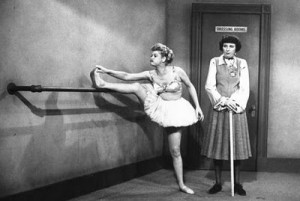
Yes, Mary was inarguably Lucille Ball’s best friend for some 30 years, and was virtually a member of the family. Both women were both bold and direct and a little ‘in-your-face.’ They both loved to laugh, and neither had much patience for ineptness. Because they started working about the same time (Mary was 14 months older), they had experiences in common. Lucy appeared in the film version of Stage Door, while Mary appeared in the original Broadway production, for which Lucy had auditioned. They had deep affection for each other, evidenced by never-before-published letters that I excerpt in the book.
How did she get Cary Grant’s trunk?
An interesting story. In the 1930s, while Mary was a young amateur performer in St. Louis, an actor performing in a touring stage show there got a film contract offer and left quickly for Los Angeles. His name was Archie Leach and, when he left, he gave his theatrical costume trunk to a friend of Mary’s, Clifford Newdahl, who asked Mary’s family to store it for him when he entered World War II. It sat in their basement until after the war, when Newdahl decided he no longer needed it. So the trunk became Mary’s . . . and Leach, of course, became Cary Grant. Mary loved the trunk and made great use of it, like during her national tour of Oklahoma! in 1979.
What problem did she face on the set of “The Trouble With Angels?”
This was one of the few moments in her career where she let others down, and she no doubt agonized over it. Playing a nun at a Catholic girl’s school, she was to jump in a swimming pool in full habit to help two young girls flailing in the water. Mary had never learned to swim, so producers arranged for her to receive lessons at the YMCA in advance. The day of the shoot, without any warning to producer or director, Mary refused to enter the water, saying she was afraid she’d drown. In reality, she’d never showed up for the lessons that Columbia paid for – not out of fear of drowning, but out of fear that others would learn from her swimsuit and swollen arm that she had undergone a mastectomy. Mary went to great lengths to hide her breast cancer. So this consummate professional made a conscious decision to let her co-workers down rather than risk revealing her condition, since the production was now forced to hire a stuntman, incur additional costs and delay shooting. Both the cancer and the stigma surrounding it in the 1960s shaped many of her interactions with people later.
What role did her faith play in her life?
Mary’s faith was profoundly important to her. To her, church was not a place merely to spend Sunday mornings; it was the very center of her community. She was completely engaged in the life of her church (All Saints’ Episcopal Church in Beverly Hills, Calif.), serving on various committees, helping to organize special events, and even teaching Sunday School when in town. More than this, Mary put her faith into practice. She had a strong sense of service to others that was rooted in her faith. She was a longtime hospital volunteer in Los Angeles. She did not just providing comfort to patients, keep them company, arrange interpreters or assist the chaplain, but advocate on patient care issues to management. She spoke on public occasions about the importance of volunteerism and about her faith, often citing a verse from First Corinthians about having faith strong enough to move mountains not being enough without charity.

